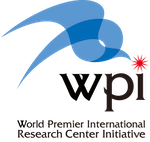Congratulations to WPI-SKCM² PI Kenta Shigaki and ALICE collaborators on the Breakthrough Prize in Fundamental Physics
We are pleased to extend our congratulations to Hiroshima University WPI-SKCM² PI Kenta Shigaki, Affiliate Member Satoshi Yano, and all their collaborators at the ALICE experiment at CERN, one of the four major international collaborations recently awarded the largest prize in science, the 2025 Breakthrough Prize in Fundamental Physics.
The team at ALICE, which is an acronym for ‘A Large Ion Collider Experiment’, has tackled fundamental mysteries such as the origin of mass and the early universe by studying quark-gluon plasma, a state of matter believed to have filled the universe just microseconds after the Big Bang.
Shigaki’s group at Hiroshima University leads in developing one of the detectors important for studying heavy-ion collisions, a semiconductor-based precise particle detector called the Muon Forward Tracker (MFT). His group is also responsible for computing simulations via its Tier 2 regional grid node.
“We are conducting big science, with thousands of physicists and engineers from all over the world collaborating and competing at the same time. I think it is the great spirit of the Breakthrough Prize to recognize individuals there. Each of seven current collaborators in our group entitled to the ALICE authorship, including four PhD students, is explicitly named in the laureate list. We are trying to elucidate the most fundamental mysteries in nature around us, including why and how we ourselves weigh, which is real fun. I hope this kind of recognition motivates young people better toward such fundamental natural science.” said Prof. Kenta Shigaki, PI at WPI-SKCM² and professor at the Graduate School of Advanced Science and Engineering at Hiroshima University.
The award, announced on April 5, 2025, recognizes ALICE and three other experiments at the Large Hadron Collider, LHC, for precision measurements of the Higgs particle, discovery of new particles, the asymmetry between matter and antimatter, and the nature at the shortest distances and most extreme conditions. ALICE particularly leads the scientific efforts on the last topic.
While athletes and entertainers often take center stage as public heroes, the Breakthrough Prize aims to highlight scientists, those whose research enhances understanding, changes lives, and improves society. The awarding foundation’s mission is “celebrating individual achievement and honoring scientists as heroes of our society, inspiring the next generation of scientists, [and] championing science for the benefit of all as a global, apolitical organization.”
While CERN and the ALICE detector are located on the Switzerland–France border, this year’s prize celebrates “the community of global endeavour.” The prize is awarded to 13,000 researchers from 70 countries, including 2,000 researchers from 39 countries who make up the ALICE experiment.
For Japan, six universities, Hiroshima University, Nagasaki Institute of Applied Science, Nara Women’s University, Saga University, University of Tokyo, and University of Tsukuba, have formally participated in ALICE, with around 180 researchers and graduate students contributing to detector development, experiment’s operation, and physics analysis.
The ALICE team received $500,000 (about ¥75 million) from the $3 million Breakthrough Prize pool, which will be used to support early-career researchers.
More information
Breakthrough Prize
https://breakthroughprize.org/Laureates/1
https://breakthroughprize.org/Laureates/1/L3992
CERN: https://home.cern/news/press-release/knowledge-sharing/lhc-experiment-collaborations-cern-receive-breakthrough-prize
ALICE: https://alice-collaboration.web.cern.ch/2025_Breakthrough_Prize
Hiroshima University (Japanese): https://www.hiroshima-u.ac.jp/news/89989
Photo Credit: Johannes Vogel, CC BY-SA 3.0 https://creativecommons.org/licenses/by-sa/3.0, via Wikimedia Commons



